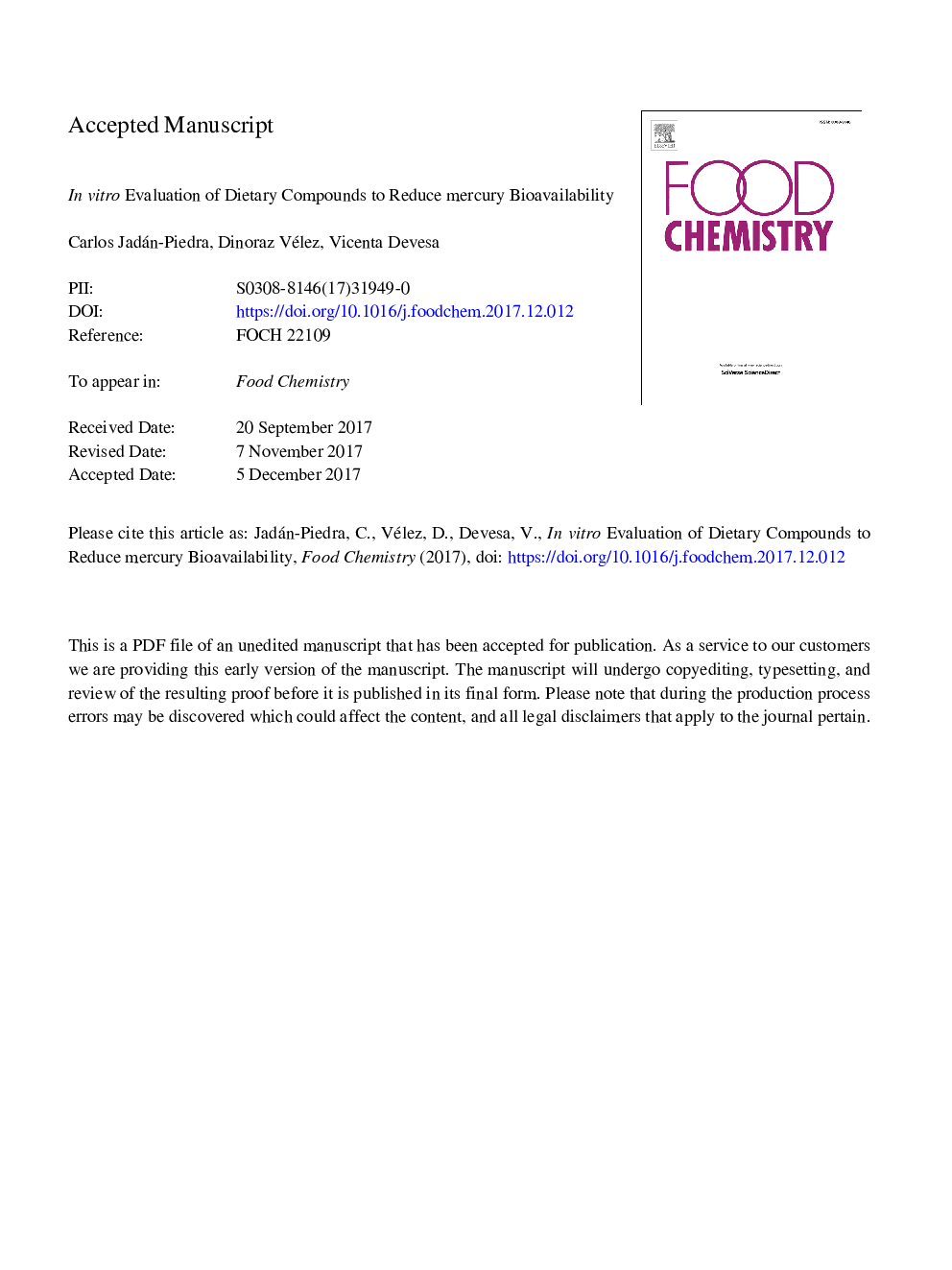| Article ID | Journal | Published Year | Pages | File Type |
|---|---|---|---|---|
| 7586110 | Food Chemistry | 2018 | 30 Pages |
Abstract
Mercury in foods, in inorganic form [Hg(II)] or as methylmercury (CH3Hg), can have adverse effects. Its elimination from foods is not technologically viable. To reduce human exposure, possible alternatives might be based on reducing its intestinal absorption. This study evaluates the ability of 23 dietary components to reduce the amount of mercury that is absorbed and reaches the bloodstream (bioavailability). We determined their effect on uptake of mercury in Caco-2 cells, a model of intestinal epithelium, exposed to Hg(II) and CH3Hg standards and to swordfish bioaccessible fractions. Cysteine, homocysteine, glutathione, quercetin, albumin and tannic reduce bioavailability of both mercury species. Fe(II), lipoic acid, pectin, epigallocatechin and thiamine are also effective for Hg(II). Some of these strategies also reduce Hg bioavailability in swordfish (glutathione, cysteine, homocysteine). Moreover, extracts and supplements rich in these compounds are also effective. This knowledge may help to define dietary strategies to reduce in vivo mercury bioavailability.
Keywords
Related Topics
Physical Sciences and Engineering
Chemistry
Analytical Chemistry
Authors
Carlos Jadán-Piedra, Dinoraz Vélez, Vicenta Devesa,
